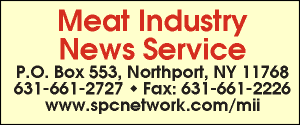
020722 Genome Map May Help BreedingJuly 10, 2002Urbana, IL - Researchers are near completion of a rough map of the cattle genome, an achievement scientists say could eventually help breed healthier cows that produce more milk and the choicest cuts of meat. The map, which uses the human genome as a key, should be finished by the end of the year and published in early 2003. Scientists hope to eventually use the map as a tool in sequencing the entire cattle genome. "We're very optimistic about this and what it will mean for bovine research," said Steven Kappes, director of the USDA's Meat Animal Research Center in Clay Center, Neb. The map will cover about 95% of the cattle genome, using the completed human genome as a reference base. The $2.5 million project is being funded by the U.S. Department of Agriculture. A consortium of scientists from the University of Illinois, Texas A&M University, the British Columbia Cancer Agency and The Institute for Genomic Research in Rockville, Md., have been working on the project the past five years. The map is currently being completed in laboratories at Illinois. Harris Lewin, director of Illinois' W.M. Keck Center for Comparative Genomics, said the rough map of the cattle genome -- the chemical sequence that contains the basic information for building and running an organism -- can help researchers improve genetic traits of beef and dairy cattle. "Having that information is really like the human genome -- you begin to mine it. And you can utilize it in many different ways to develop new tools for hunting for genes of economic importance," Lewin said. Kappes said scientists are still waiting for a USDA decision on whether to fund the full sequencing of the cattle genome -- at a cost of about $100 million. Private groups may have to help, he said. Once the cattle genome is completed, which Lewin predicts will be happen within the next two years if the funding is approved, scientists can begin to identify all of the genes' functions. Producers will be able to selectively breed for tenderness and marbling, and animals will become more resistant to disease, less reliant on antibiotics and birth larger, healthier litters, Lewin said. Maralee Johnson, vice president of the Illinois Beef Association, said the more scientists learn about the functions of cattle genes, the easier it will be for producers to supply the market with a consistent product. For example, breeders will be able to do genetic tests on bulls to see whether they are likely to pass on desired traits such as longevity and prolonged milk production. "One of our challenges is consistency of product and tenderness. For those producers to be able to access a constant supply of similar cattle is really critical," she said. Research into cattle genes could also help producers ward off infectious disease and cut back on the use of antibiotics. Some believe the heavy use of antibiotics at feedlots will lead to infections in people and animals that are resistant to the drugs. "The idea there from the beginning was to be able to selectively breed animals with resistance to infectious diseases. Which is really the optimum way to do it because many of the animals vaccines are only partially effective and very expensive," he said.
E-mail: sflanagan@sprintmail.com |

